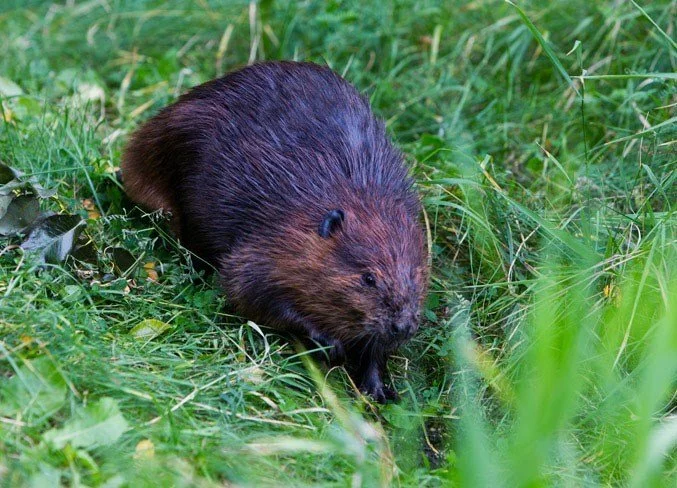The ongoing drought in many parts of B.C. is causing some rivers in the province's northern Interior to reach their driest mid-October levels in years. In Prince George, the unusually low waters have locals worried. Harriet Schoeter moved to the northern B.C. city 60 years ago, and loves walking the shore where the Fraser and Nechako rivers meet. This week, the water was so low she could almost walk right across.
Beavers could help replace artificial dams being decommissioned on Vancouver Island
Members of a Canadian conservation organization are working on a project to increase biodiversity and healthy wetlands in British Columbia with the help of beavers. Ducks Unlimited Canada is mapping areas in the province where beavers can replace artificial dams once they've been decommissioned. "Beavers are a keystone species," said Jen Rogers, a master's student at Simon Fraser University working with Ducks Unlimited Canada. "They're considered ecosystem engineers."
Dam nuisance: St. Albert explores beaver-habitat flood mitigation
The City of St. Albert plans to add a couple of new tools to its water-management tool belt over the next few years to counteract problems caused by the local beaver population. Melissa Logan, the city's environmental coordinator, said staff will install pond levellers in high-priority spots throughout Carrot Creek and the Sturgeon River, starting this summer. Unbeknownst to the estimated 16 individual beavers who call these rivers home, pond levellers allow water to flow through dams to prevent flooding, Logan said.
How beavers are reviving wetlands
We are losing wetlands three times faster than forests, according to the Ramsar Convention on Wetlands. When it comes to restoring them to their natural state there is one hero with remarkable powers - the beaver. Wetlands store water, act as a carbon sink, and are a source of food. The Ramsar Convention on Wetlands says they do more for humanity than all other terrestrial ecosystems - and yet they are disappearing at an alarming rate. The main problems are agricultural and urban expansion, as well as droughts and higher temperatures brought about by climate change. But if you have a river and a beaver it may be possible to halt this process.
Kootenay Connect to receive extended funding for conservation programs
“This is a critical time for conservation work locally, and also globally. Kootenay Connect is moving our region toward doing our part to protect 30 per cent of Canada’s land and water by 2030, the recently agreed upon global conservation goal to minimize our planet’s ongoing biodiversity loss,” said Dr. Michael Proctor, Kootenay Connect Science Advisor. “We look forward to a network of healthy interconnected ecosystems that support a rich array of wildlife and important ecosystem services.”
Beavers expanding north bring damming consequences for Inuit and wildlife
Some communities, such as Umiujaq, are particularly at risk to be impacted by beaver expansion because of the geography, says Mikhaela Neelin, director of the Nunavik Hunting Fishing Trapping Association. Umiujaq is one of the communities located just north of the treeline — the edge of the habitat where trees are capable of growing. "In the tundra and a lot of regions, they're seeing beavers appear there for the first time," said Neelin, adding that the consequences are a mixed bag.
Flood-causing beavers must be 'eradicated,' says mayor of Quebec town
They might be a beloved Canadian symbol, but beavers are being anything but patriotic in Grenville-sur-la-Rouge, Que. There are roughly 800 beavers and 200 dams in the small western Quebec municipality, located about 100 kilometres east of downtown Ottawa, according to Mayor Tom Arnold, who said all those dams are causing major damage. "We're talking about approximately 35 square kilometres of our municipality, right now, that's under water because of the beaver," he said. "The damages are extensive."








